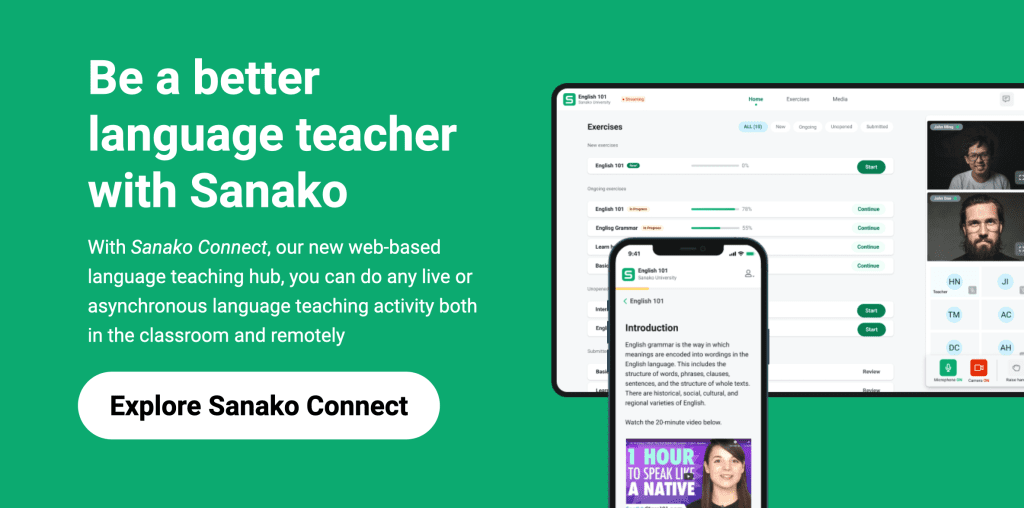Building strong reading skills is a vital part of developing fluency in your students’ target language. It’s clearly essential that they are able to decipher and understand the wide range of text-based materials that they will encounter, including instructions, menus, timetables, to-do lists, websites, text messages, books, blogs, newspapers and magazines. Reading also helps students to build vocabulary, to see different grammar constructs being used and improve their writing skills. As well as being great fun, strong reading skills are hugely beneficial for all language learners.
But what are the best ways for modern language educators to build their students’ reading skills? How can students be more engaged in reading activities? This blog post outlines the different approaches to teaching reading skills and highlights the key skills foreign language learners will need to develop to succeed.
Extensive vs Intensive Reading – What are they and what is the difference?
Broadly speaking there are two different but highly complementary approaches to reading. They are called extensive and intensive reading and both can be effectively used to improve students’ reading skills and language fluency.
Extensive reading can be simply summarised as reading for pleasure. This approach advocates that students should read as much content as possible in their target language as frequently as possible. Advocates of this approach argue that it’s not necessary to understand every word in a passage, rather increased exposure to the written language builds vocabulary and familiarity, which leads (in time) to reading competence and stronger overall language skills.
On the other hand, intensive reading is often defined as reading for detailed information. This is a highly-focused activity which is specifically targeted on a shorter piece of text, interrogating it and enabling students to extract key information from it. This approach is focused on helping language learners really understand the specifics of each text as well as paying close attention to the language’s grammar and syntax rules.
Advantages and disadvantages
Summarizing years of research about the positive impact of extensive reading on language learning, Bamford and Day, 2004 concluded:
“Good things happen to students who read a great deal in the foreign language. Research studies show they become better and more confident readers, they write better, their listening and speaking abilities improve, and their vocabularies become richer. In addition, they develop positive attitudes toward and increased motivation to study the new language.”
However, although extensive reading is a great tool for people who already enjoy reading, it is not overly effective for those students who find reading boring. Furthermore, reading texts superficially can mean that students may miss key details, grammar points and core vocabulary in the text that will be important for their wider learning journey.
In contrast, intensive reading approaches enable students to gain a full understanding of a piece of text. They can look up unknown words in a dictionary and carefully translate each sentence so that they fully understand it and are able to answer comprehension questions about it. Students form a deep engagement with the text and are able to demonstrate their understanding and knowledge.
But this approach is hard work! It certainly requires focus and dedication for students to work through the text word by word and sentence by sentence. And of course for some students this intense analysis of the text may be boring and tedious.
Developing key reading skills
In language teaching classrooms, intensive reading approaches are most commonly deployed – it’s not seen as an effective or efficient use of time for students to just sit around reading for pleasure! But it is undoubtedly important for language educators to encourage students to read as much as possible in their target language in their own time. To that end, educators can support students to do this by having a library in their classrooms and by encouraging them to borrow books to read at home.
A combination of the two approaches would appear to offer the best route forwards for most learners. In both cases, students do need to also develop the following key skills to enhance their capabilities and to read effectively.
1. Contextualizing
When reading any piece of text, it’s vital for students to be able to place it within a context. Encourage them to consider if the text is a work of fiction or if it is a piece of news reporting. Students should be able to identify or work out when the piece was written – are attitudes and clothes different from today? Does the text relate to a specific location / audience or is it a piece about an issue that impacts us all? All of these considerations will support their understanding and interpretation of the text in question.
An appreciation of context is also handy if learners encounter words that they don’t know or understand. Ask learners to think about the context of those words and get them to use the surrounding words that they do know to provide useful clues to make an educated guess.
2. Predicting and previewing
There’s lots that students can do to boost their understanding before even starting to read the text. Help students to decipher clues (e.g headlines, quotes, pictures) to try and establish what the text is broadly about before they begin to read. Identifying those words and phrases that they do know and understand can also be a helpful starting point.
3. Scanning and skimming
Students do not always need to read and understand every word in a text to extract key pieces of information. Learning to quickly scan or skim read documents can therefore be an invaluable skill when they need to find key details quickly – the price of a hotel room, the time their plane takes off etc. This skill can be supported by encouraging them to pick out key details / words and highlight / underline them on a first look through before returning to the text to find the specific answers needed.
Skimming is a similar fast reading skill that helps learners to quickly get the gist or a general overview of a passage or publication. It allows them to identify which parts of a long text are more relevant to the question or their enquiry.
4. Summarising
After reading a piece of text, students should be able to summarise the key points of what they have just read and then communicate that information to someone else. This doesn’t involve retelling everything that they understood from the piece – just a quick and concise (i.e one or two sentences) review of the key themes, arguments or events.
5. Visualizing
For visual learners, supporting them to visualise what they are reading can be hugely helpful in supporting the development of their reading (and other language) skills. Ask them to describe what the main character in the story looks like. As well as talking to them about what they think it would be like to live in Dickens’ London, why not get them to write down their thoughts to build up key descriptive vocabulary?
How do Sanako products help educators to teach reading skills?
Sanako produces a range of language teaching tools that help language teachers to improve their students’ reading skills. For example our browser-based language teaching solution Sanako Connect enables educators to:
- Create specific reading tasks by uploading a wide variety of stimulus materials including text files, PDFs, presentations and web pages
- Test students’ understanding of texts by creating exercises and questions for them to answer through gap-fill and multiple-choice quizzes
- Encourage students to read the texts aloud and to record their own voice. Students can then receive time-coded feedback from the teacher.
- Provide detailed text and audio feedback via Sanako Connect’s feedback functionality, helping students to understand what went well and where further work might be needed.
If you’d like to find out more about how Sanako’s dedicated language teaching solutions could transform your approach to teaching reading skills, then please click here or the banner below!

